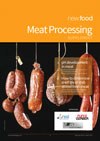Tackling food fraud: Why it’s got to be led from the top
10 October 2014 | By Jude Mason, Technical Services Director at NSF
Jude Mason, Technical Services Director at NSF, considers in more detail why tackling food fraud needs leadership, coordination and liaison across the business – and that means it demands board level attention...

























